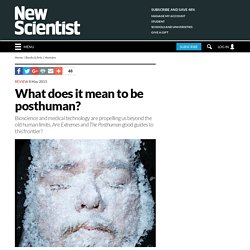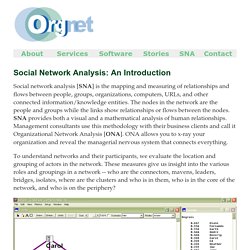

Sign in or Register.
Indroduction to digital culture. BBC Radio 4 - The Digital Human. Reflections on Black Mirror – by those for whom science fiction became reality. Warning: this article contains some spoilers.

Hated in the Nation Hated in the Nation is Black Mirror’s excursion into public shame: it takes a series of targets who have brought disapprobation upon themselves. One is a columnist who slates a disabled person; another, an X Factor style judge who scorns a nine-year-old; a protestor who pretends to urinate on a war memorial; a politician so closely modelled on George Osborne that it made me feel nostalgic for a pre-Brexit age, when he was the summit of Tory obnoxiousness. They all find themselves in the eye of a Twitter storm, only this time it’s for real – the anger doesn’t crescendo then vanish. Instead, it culminates in violence so agonising that a person would slash her own throat with a broken bottle of Merlot to hasten it.
There is a poignant description at one point of what it feels like to be in the eye of such a storm: “It was like having a whole weather system turn against me. Zoe Williams Men Against Fire Playtest Nosedive Priya Elan. Digital Curation. Debates in the Digital Humanities. 2011, tools, quarterly, victoria, now, jobs, projects, startup grant, companion, blog —Top ten Google Instant appendages to a search on “digital humanities” as of April 28, 2011, 10:35 AM EDT This Strange Confluence Digital humanities is a tactical term.

In a previous essay, “What Is Digital Humanities and What’s It Doing in English Departments?” I suggested that for those seeking to define digital humanities, the then-current Wikipedia definition (and top Google hit) served about as well as any and could save a lot of headache and, second, that the term “digital humanities” itself has a specific, recoverable history, originating with circumstances (which I documented) having primarily to do with marketing and uptake, and, third, that the term is now being “wielded instrumentally” by those seeking to effect change “amid the increasingly monstrous institutional terrain” of the contemporary academy. The institutional structures we create thus tend to have long half-lives. And the Name. Digital Research Methods.
Douglas Rushkoff: Present Shock. When Everything Happens Now. Deleuze and Guattari’s A Thousand Plateaus Debates in the Digital Humanities. Debates in the Digital Humanities. Network Participation. What does it mean to be posthuman? By David Cohen HOW would you like to be a posthuman?

You know, a person who has gone beyond the “maximum attainable capacities by any current human being without recourse to new technological means”, as philosopher Nick Bostrum of the Future of Humanity Institute at the University of Oxford so carefully described it in a recent paper. In other words, a superbeing by today’s standards. If this sounds like hyperbole, bear with me. Behind the jargon lies a fascinating, troubling idea. Advertisement No, we mean people who, through genetic manipulation, the use of stem cells, or other biointervention, have had their ability to remain healthy and active extended beyond what we would consider normal. “Whatever it means to be ‘posthuman’, this discussion is too important to be left to academics” Is it possible to imagine such humans without recourse to science fiction clichés?
Then again, imagine if you were alive 150 years ago, and someone described life as it is today. More on these topics: Social Network Analysis: An Introduction by Orgnet,LLC. Social network analysis [SNA] is the mapping and measuring of relationships and flows between people, groups, organizations, computers, URLs, and other connected information/knowledge entities.

The nodes in the network are the people and groups while the links show relationships or flows between the nodes. SNA provides both a visual and a mathematical analysis of human relationships. Management consultants use this methodology with their business clients and call it Organizational Network Analysis [ONA]. ONA allows you to x-ray your organization and reveal the managerial nervous system that connects everything. To understand networks and their participants, we evaluate the location and grouping of actors in the network. We look at a social network -- the "Kite Network" above -- developed by David Krackhardt, a leading researcher in social networks. Margaret Atwood – A State of Wonder: How Technology Shapes Story. JeanBaudrillard Simulations and Simulacra. Introduction to Digital Culture 2016-17 Node 1. EBOOK, Understanding Digital Culture, Vincent Miller. Digital culture.
(11) (DOC) "Understanding Digital Culture - Introduction"